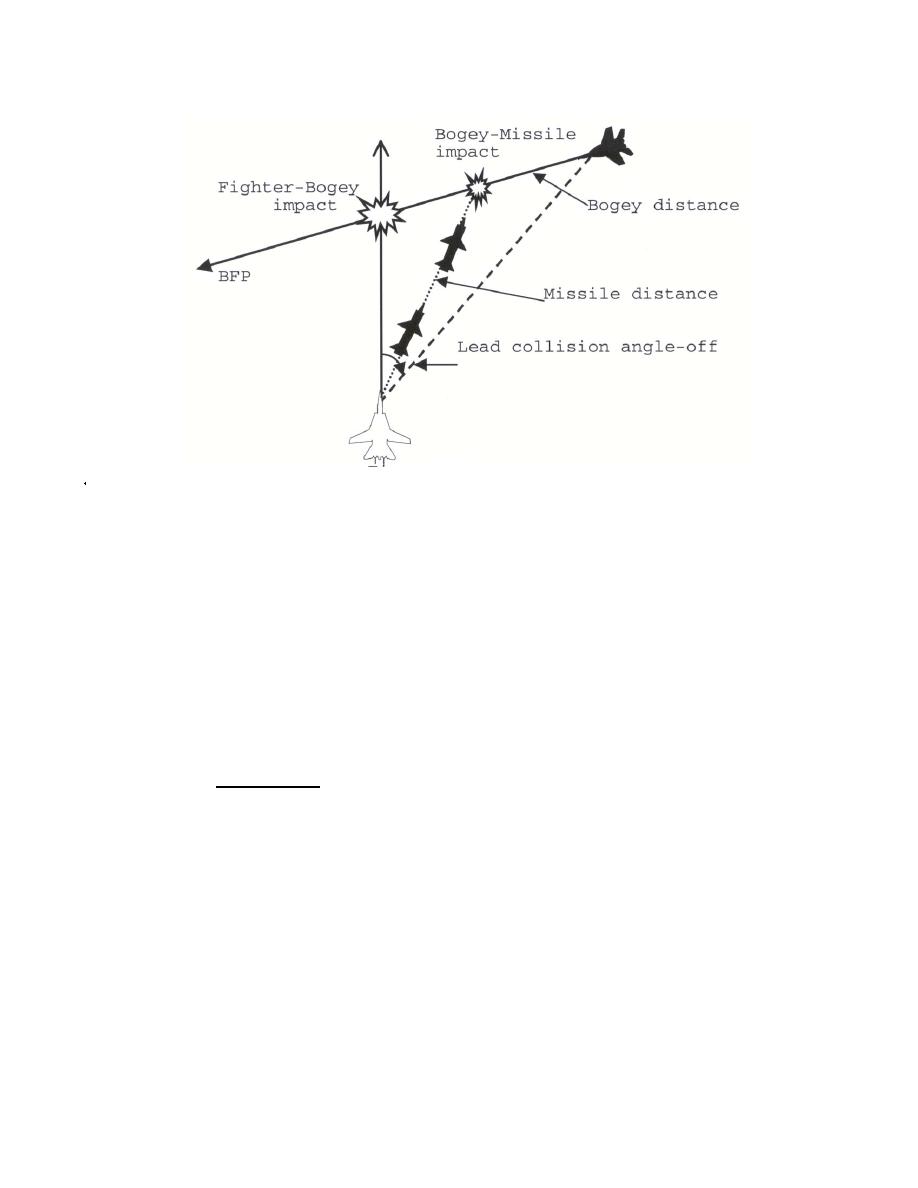 |
|||
|
|
|||
|
|
|||
| ||||||||||
|
|  INTERCEPT PROCEDURES TEXTBOOK
Figure 1
The speed of the missile requires that the bogey be placed off collision bearing so that the
lead collision angle-off is satisfied. Because of this, three things occur:
1. Target aspect will be greater than fighter's AO.
2. The bogey is placed inside collision bearing and will drift away from it. As a result, TA
will increase over time.
3. The missile is on a collision course with the bogey.
The fighter's task is to establish a collision course at long range to close on the bogey in the
quickest manner possible. At a range slightly greater than Rmax, this collision is broken off to
position the bogey inside collision bearing. This will establish the bogey at the correct lead
collision point for the missile at or inside Rmax.
Lead Angle Off
Because the speed of the missile and that of the bogey are not equal, an isosceles triangle will
not exist. The angle off of the bogey, when the fighter is in correct position for firing the
Sparrow, is known as "lead." In Figure 1, it is the smaller of the two angles shown from the
fighter's nose position.
The fire control computer of a modern fighter will provide the necessary steering information
to the aircrew for this lead angle off. The fighter will then maneuver to position the aim dot to
the proper position. Once the dot is within the ASE Circle and range requirements have been
met, the AIM-7 can successfully be deployed.
115
|
|
Privacy Statement - Press Release - Copyright Information. - Contact Us |